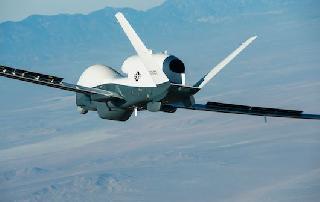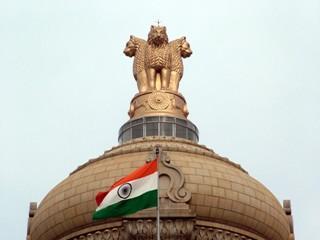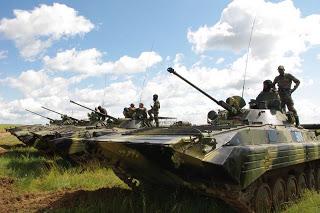
The Northrop Grumman-built Triton unmanned aircraft system completed its first flight May 22 from the company's manufacturing facility in Palmdale, California. The flight, which was about 1.5 hours, successfully demonstrated control systems that allow Triton to operate autonomously. Photo: Northrop Grumman.
PALMDALE, CALIFORNIA (BNS): The Northrop Grumman Corporation-built MQ-4C Triton high-altitude unmanned aircraft successfully completed its first flight today from the company's manufacturing facility in Palmdale.
"First flight represents a critical step in maturing Triton's systems before operationally supporting the Navy's maritime surveillance mission around the world," Capt. James Hoke, Triton programme manager with Naval Air Systems Command, was quoted as saying in the company news release.
Triton is specially designed to fly surveillance missions up to 24 hours at altitudes of more than 10 miles - allowing coverage out to 2,000 nautical miles. The advanced suite of sensors can detect and automatically classify different types of ships.
A Navy and Northrop Grumman flight test team conducted about a 1.5-hour flight that started at 7:10 a.m. from Palmdale.
"Triton is the most advanced intelligence, surveillance and reconnaissance (ISR) unmanned aircraft system ever designed for use across vast ocean areas and coastal regions," said Mike Mackey, Northrop Grumman Triton UAS deputy program director.
Additional flight tests will take place from Palmdale to mature the system before being flown to the main flight test facility at Naval Air Station Patuxent River, Maryland, later this year, the release added.
Northrop Grumman is the prime contractor to the Navy's MQ-4C Triton Broad Area Maritime Surveillance programme.
In 2008, Northrop Grumman was awarded a systems development and demonstration contract to build two aircraft and test them in preparation for operational missions.
The Navy's programme of record calls for 68 Tritons to be built.
Triton carries a variety of ISR sensor payloads that allow military commanders to gather high-resolution imagery, use radar to detect targets, and provide airborne communications and information sharing capabilities to military units across long distances.
 Previous Article
Previous Article Next Article
Next Article












The Indian Air Force, in its flight trials evaluation report submitted before the Defence Ministry l..
view articleAn insight into the Medium Multi-Role Combat Aircraft competition...
view articleSky enthusiasts can now spot the International Space Station (ISS) commanded by Indian-American astr..
view article